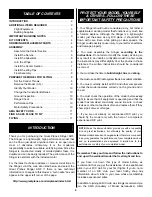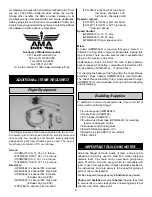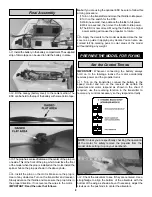
❏ ❏
1. Install a control horn on the top of the ailevator with
two 2-56 x 3/8” [9.5mm] screws and the nylon backplate.
The control horn should be in line with the servo arm as
shown in Step 2. Drill 5/64” [2mm] holes for the screws. Note
that the holes in the front of the control horn (for the clevis)
are in line with the hinge line.
❏ ❏
2. Thread a nylon clevis twelve turns onto a 12” [305mm]
pushrod. Install a silicone retainer on the clevis. Connect the
clevis to the second hole from the top on the control horn. With
the servo and ailevator centered, mark the pushrod where it
meets the outer hole in the servo arm. Make a Z-bend in the
pushrod at the mark. If necessary, enlarge the hole in the servo
arm with a #48 drill bit (or a 5/64” [2mm] drill). Remove the
pushrod from the control horn and insert the Z-bend into the
servo arm. Connect the clevis to the control horn.
Note: See page 8, Step 2 for an explanation of centering
the ailevators.
❏
3. Return to step one for the other wing panel.
❏
1. Insert the aluminum joiner tubes into the left wing
panel. The longer tube goes in the rear hole.
❏
2. Join the right wing panel onto the joiner tubes in the
left panel. Use the white tape on the bottom of the wing to
hold the wing panels together.
Join the Wings
Install the Ailevators
6






























